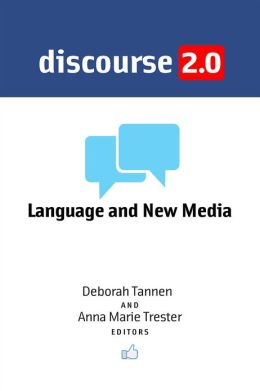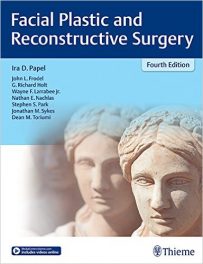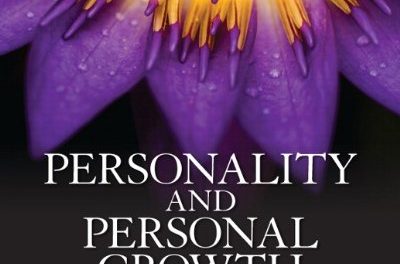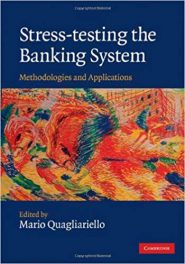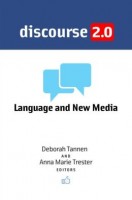 Editors: Deborah Tannen and Anna Marie Trester (Essays selected for publication in this book taken from contributions submitted by participants in the sixty-third annual meeting in 2011 of the Georgetown University Round Table on Languages and Linguistics.
Editors: Deborah Tannen and Anna Marie Trester (Essays selected for publication in this book taken from contributions submitted by participants in the sixty-third annual meeting in 2011 of the Georgetown University Round Table on Languages and Linguistics.
Publisher: Georgetown University Press – 258 pages
Contributors: Gillian Andrews, Jannis Androutsopoulos, Naomi S. Baron, Jeffrey Boase, Aaron Chua-Yuan Hung, Stephen M. Diomenico, Cynthia Gordon, Susan C. Herring, Jens Kugele, Carmen Lee, Melissa Luke, Jenna Mahay, Marianna Ryshina-Pankova, Deborah Tannen, Anna Marie Trester, Crispin Thurlow, Herve Varenne, Tuija Vertanen, Sarah Wesler, and Laura West
Book Review by: Deekay Daulat
Electronic media such as online websites and the devices that take users to them have changed forever the lives of modern people attuned to today’s highly interconnected world. Popular online sites such as Facebook, Linked In, Twitter, UTube and others that we access through desktop computers or mobile devices – such as cell phones, iPads, iPhones, Blackberrys and others – are changing the content of our communications “in ways that we are only beginning to understand,” the editors Deborah Tannen and Anna Marie Trester point out to this in this pioneering book.
Twenty experts on new media including Tannen and Trester contribute their observations and information in Discourse 2.0: Language and New Media. They point out to us the ways language is being used in, and shaped by, these new media contexts.
The topics covered in this book include: asynchronicity and turn-taking; electronic discourse and assessment in educational and other settings; multimodality and the “participatory spectacle” in Web 2.0; role of English on the worldwide web; use of social media and texting shaping communication with family and friends; ways that we engage with technology including reading onscreen and on paper; Web 2.0 conceptualization; and how all of these processes interplay with meaning-making.
Individuals, professionals, students, and teachers of new media will see how Discourse 2.0 offers a rich source of insight into these new forms of interactive communication that are pervasive in our lives.
Here is an overview of the content in this book:
- Discourse in Web 2.0: Familiar, Reconfigured and Emergent Discourse
- Polities and Politics of Ongoing Assessments
- Participatory Culture and Metalinguistic Discourse
- “My English Is So Poor…So I Take Photos”
- “Their Lives Are So Much Better Than Ours!”
- The Medium is the Metamessage
- Bringing Mobiles into the Conversation
- Facework on Facebook
- Mock Performatives in Online Discussion Boards
- Re- and Pre-authoring Experiences in Email Supervision
- Blogs: A Medium for Intellectual Engagement
- Reading in Print or Onscreen
- Fakebook, Synthetic Media, Pseudo-sociality, and the Rhetorics of Web 2.0
New media including social media is a growing field. Much has been discovered and disseminated about its capabilities to individuals and companies, but much more needs to be learned about what it can or cannot do. Deborah Tannen and Anna Marie Trester have taken a commendable pioneering step in gathering the latest information from the experts in new media, organizing and presenting it in this valuable book.
Deborah Tannen is university professor and professor of linguistics at Georgetown University and author of many books on discourse analysis.
Anna Marie Trester is a professorial lecturer and director of the master’s program in language and communication in the Department of Linguistics at Georgetown University.

